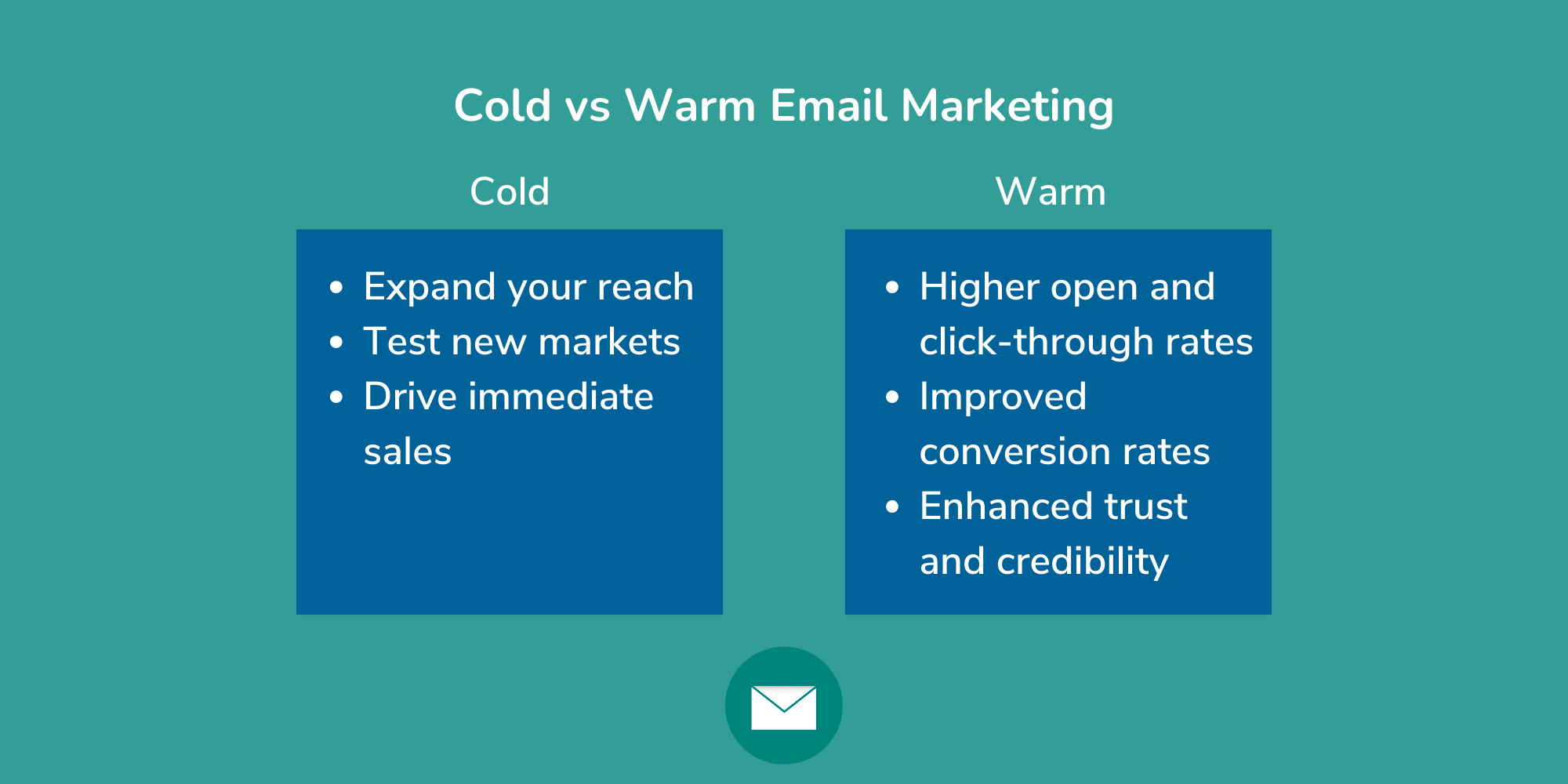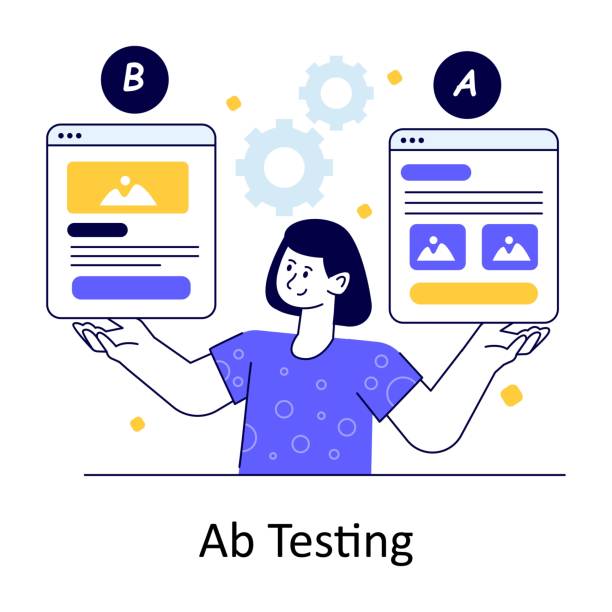
Email Marketing 101
In a world where new, shiny distractions are inevitable, email marketing remains a reliable way to engage with your audience, establish brand authority, and drive revenue. In this article we’ll explore all the essential aspects of email marketing and how to harness its potential effectively.
What is Email Marketing?
Email marketing is when companies send emails regarding their products or services to a group of people.
How Does Email Marketing Work?
Email marketing is a powerful strategy that revolves around the process of emailing tailored messages to a list of people. It works through creating compelling content, segmenting the audience, and leveraging automation tools for scheduling and personalization. The primary objective of email marketing is to engage, nurture, and ultimately convert leads into loyal customers through strategically crafted email campaigns. There are two types of email marketing styles you should be aware of.
Cold vs. Warm Email Marketing
Cold email marketing is the practice of sending unsolicited promotional emails to prospects who have not expressed prior interest in your products or services. On the other hand, warm email marketing entails sending promotional emails about your company to prospects or clients who are already familiar with your offerings and have expressed prior interest. Both approaches share the common goal of helping businesses broaden their reach, generate leads, build new relationships, and ultimately lead to more sales.

The Power of Cold Email Marketing
Integrating cold email marketing effectively into the rest of your marketing efforts can be pivotal in the success of your overall marketing strategy. Here are some compelling reasons to consider its inclusion:
- Expanding Your Reach
Cold email marketing allows you to tap into a broader audience that might not be aware of your company and what you do. It’s an effective way to introduce your products or services to new potential customers.
- Testing New Markets
If you’re venturing into new markets or launching a new product, cold email campaigns can serve as an initial touchpoint to gauge interest and gather feedback.
- Driving Immediate Sales
While warm emails focus on nurturing relationships, cold emails can be more direct in promoting offers, potentially leading to quicker sales.
The Power of Warm Email Marketing
In today’s digital landscape, where personalization and relevance are paramount, warm email marketing often shows more favorable results. Why? Because it builds upon existing relationships and leverages the trust you’ve already established! Here’s why warm email marketing deserves your attention:
- Higher Open and Click-Through Rates
Warm emails tend to have higher open rates because recipients recognize your name or brand. The familiarity encourages them to open the email, increasing the chance of clicks.
- Improved Conversion Rates
Since warm recipients have shown prior interest, they are more likely to convert. These leads are already warm, making the conversion process smoother.
- Enhanced Trust and Credibility
Consistent, valuable communication through warm emails strengthens trust and credibility, positioning your company as a thought leader in your industry.
Establishing your email marketing goals
Before you dive into the world of email marketing, it’s crucial to clearly define your goals. Your objectives will help shape your strategy and content and help measure your campaign’s success. These goals could range from increasing brand awareness, driving website traffic, boosting sales, or nurturing relationships.
Types of email marketing campaigns
Email marketing has a wide range of campaign types, each tailored to specific objectives and audience segments. Here are some common types of campaigns:
Promotional campaigns
These campaigns focus on driving sales through special offers, discounts, or product launches. They’re designed to encourage recipients to make a purchase or take advantage of a limited-time deal.
Newsletter campaigns
Newsletters provide subscribers with valuable content, updates, and insights. They nurture relationships, showcase your expertise, and keep your audience informed about industry trends and company news.

Drip campaigns
Drip campaigns are automated sequences that deliver a series of messages over time. They can be used for nurturing warm or cold leads.
By understanding different types of campaigns, you can choose the best approach for your specific marketing goals and audience. Each type offers unique opportunities to connect with your audience and drive them to convert.
Things to Consider
When putting together your email marketing strategy, here are some big-picture considerations to take into account.
The Role of Personalization
In email marketing, personalization has proven itself time and time again. Addressing recipients by their first name and tailoring content to their interests can significantly boost engagement. Additionally, segmenting your email list based on various criteria, such as demographics, behavior, or industry, allows for hyper-targeted campaigns that resonate with specific subsets of your audience. By personalizing communication with your audience, you foster trust and a sense of exclusivity that can significantly impact brand loyalty, response rates, and overall success.
Thought Leadership Through Content
Establishing thought leadership in email marketing involves providing valuable informative content that positions your company as the industry expert. Share insights, industry trends, and actionable tips relevant to your audience. When recipients consistently find value in your emails, they are more likely to identify your company as a trusted source of information and have your company in mind when they are ready to make a purchase.
Staying Compliant with Anti-Spam Laws
Stay compliant with privacy regulations and avoid the spam folder by steering clear of filter-triggering words such as “free,” “act now,” or “guarantee.”
Don’t Rely on One Approach
Email marketing doesn’t work alone. It works best by complimenting and enhancing other marketing channels. Integrating emails with social media and other strategies can extend your reach and reinforce your brand’s messaging. For example, email newsletters can promote your latest blog posts, effectively expanding your marketing efforts.
Which Approach is Right for Me?
The decision between cold and warm email marketing should align with your business goals and the stage of the customer journey you’d like to target:
- Awareness
If your goal is to create brand awareness or reach a broader audience, cold email marketing can help you cast a wider net.
- Lead Nurturing
For nurturing existing relationships, especially if you have a loyal customer base, warm email marketing is the preferred choice. It’s ideal for upsells and maintaining customer loyalty.
- Sales and Revenue
If you’re focused on achieving immediate sales results or running time-sensitive promotions, a combination of cold and warm email outreach can be effective. Use cold emails for initial outreach and warm emails for follow ups and relationship building.
- Content and Education
Warm emails are perfect for sharing thought leadership content, industry insights, and education materials, while cold emails can be used to introduce recipients to your valuable content.
The benefits of creating an automated email responder
Automated email responders offer significant advantages for streamlining your communication and engagement with your audience. Not to mention, it saves a lot of time too! Here are two key insights to consider when implementing automated email responders:
Design an efficient email series
Automated email responders allow you to create carefully orchestrated email series that guide your audience on a journey. These series can introduce cold leads to your brand, nurture warm leads, and re-engage older leads.
Crafting an effective email series involves mapping out a sequence of messages that align with your objectives and the needs of your audience. Each email should serve a purpose, whether it’s delivering valuable content, addressing specific pain points, or encouraging conversions.
How to segment your email marketing list
Segmentation is one of the foundations for the ultimate success of an automated email responder. It involves categorizing your audience into distinct groups based on factors such as behaviors, how often they respond in the past, and more. By segmenting your email marketing list, you can tailor your automated responses to be highly relevant to each group. This personalization increases engagement and conversion rates, as your audience will receive content or offers that directly address their interests and needs.
Automated email responders not only save time but also enhance the quality of your communication with your audience, ultimately leading to improved engagement and conversion rates.
Track the success of your email marketing campaigns
To gauge the effectiveness of your email marketing efforts, it’s essential to implement robust tracking and analytics. Email marketing platforms provide valuable insights into various performance metrics. You can monitor click-through rates, open rates, reply rates, and even unsubscribe or bounce rates to reevaluate the engagement and relevance of your emails.
Additionally, tracking the success of individual campaigns and A/B testing different elements such as subject lines, content, and sending times enables data-driven optimization. This iterative approach allows you to refine your strategies continuously and tailor your campaigns for maximum impact ensuring that your email marketing efforts remain aligned with your overarching business goals.
Conclusion
The power of email marketing in 2023 is not limited to one approach over the other. Successful email marketing often involves a combination of both cold and warm approaches. Both approaches have their merits, and the choice should be based on your specific KPI’s and business objectives. By harmonizing these strategies, you can orchestrate a well-rounded email marketing campaign that expands your reach, nurtures connections, and drives growth and success.
Interested in seeing how we can help you integrate email marketing into your overall marketing strategy? Visit here to find out more or click here to learn about getting a free digital marketing audit.

